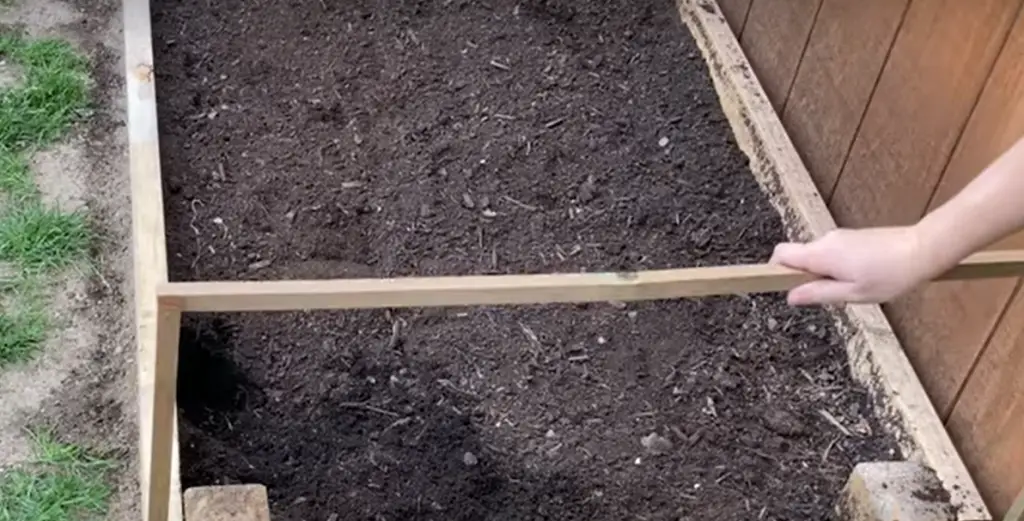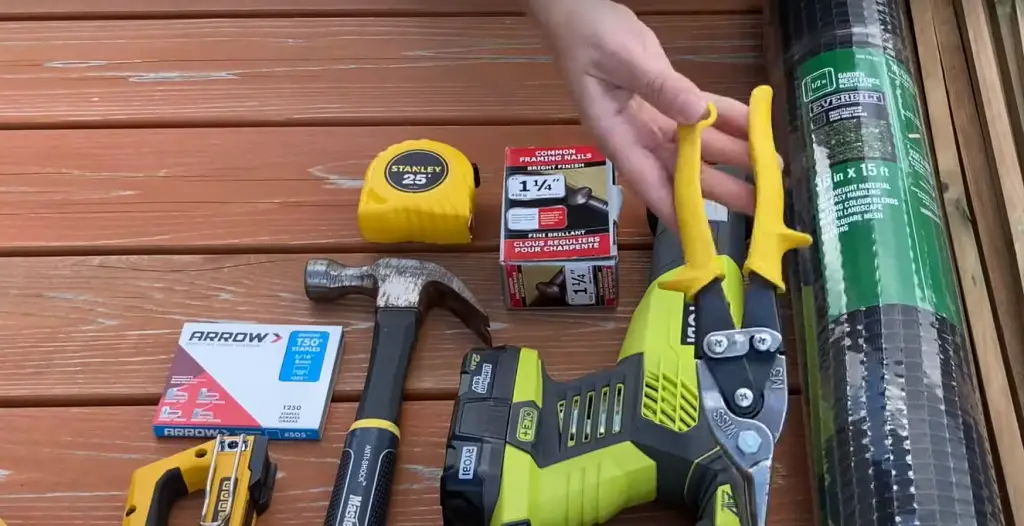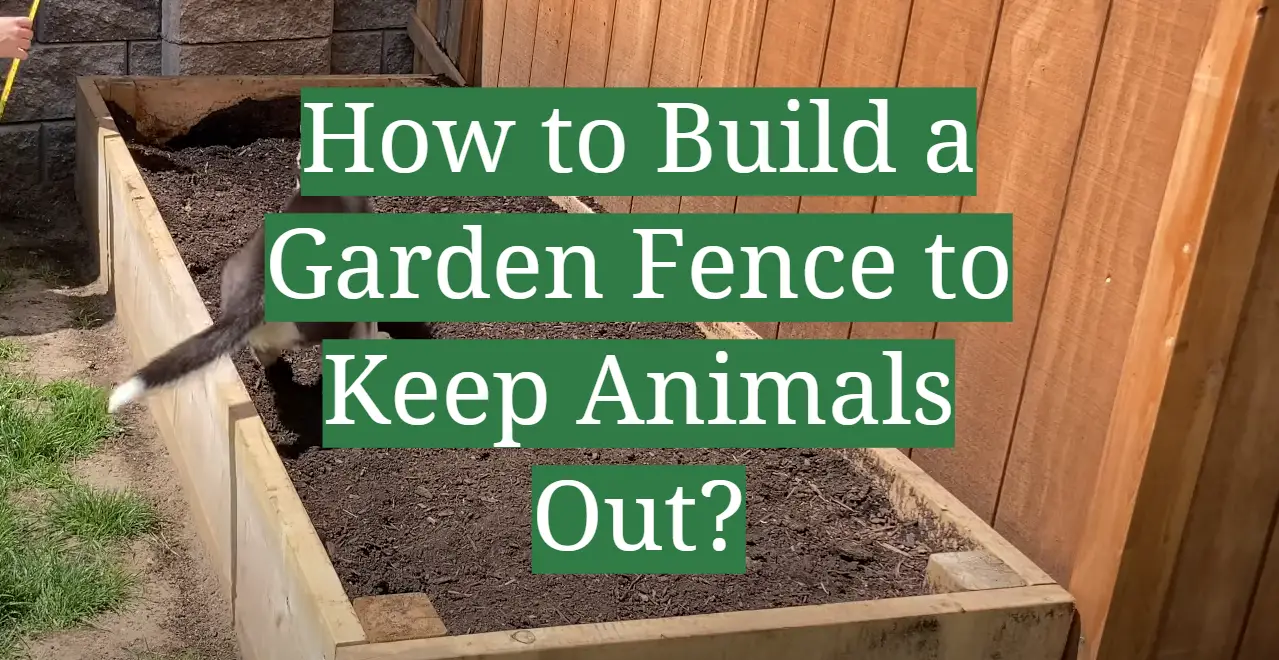If you’re like most people, you love spending time in your garden. There’s nothing quite like the feeling of being surrounded by plants and flowers, and hearing the birds sing. However, if you live in an area that is populated by wild animals, it can be difficult to keep them out of your garden. A garden fence is a great way to solve this problem. In this article, we will discuss everything you need to know about building a garden fence to keep animals out!
Why is It Important to Protect Your Garden From Animals
Gardening is a passion for many people. But, whether you’re growing vegetables or flowers, one thing is for sure: You don’t want animals wreaking havoc in your garden.

If you’re a gardener, you know that one of the most frustrating things is putting all of your time and effort into growing and nurturing your plants only to have them destroyed by foraging animals. Not only is it annoying, but it can also be costly to have to constantly replace your plants or vegetables.
Deer, rabbits, and other small mammals can destroy a garden in no time flat. Not only will they eat your plants, but they’ll also trample them as they run through. This can leave your once-lush garden looking like a war zone.
In addition to eating and trampling plants, animals can also carry diseases that can harm your plants. For example, deer are known to carry Lyme disease, which they can spread to humans through tick bites. To protect yourself and your family from these dangers, it’s important to build a fence around your garden.
Fortunately, there are some steps you can take to deter animals from entering your garden in the first place. One of those steps is erecting a fence.
But not just any old fence will do – it has to be properly built in order to be effective at keeping animals out.
General Tips for Building a Fence to Keep Animals Out
Before we get into the nitty-gritty of how to build a fence, there are a few general tips you should keep in mind. Following these tips will make the process of building a fence to keep animals out much easier, and hopefully, more successful.
Check codes in your area
Since we’re dealing with animals, it’s important to make sure that you’re following all the necessary codes and regulations in your area. This includes things like getting a permit if you need one, making sure your fence is the right height, and using the right materials.
They should be able to tell you what you need to do in order to build a fence that will be effective at keeping animals out of your yard.Another thing to keep in mind is that even if there are no codes or regulations in your area specifically about building a fence to keep animals out, there may be general fencing laws that apply. So, it’s always a good idea to check with your local government before you start building.
Build the fence that fits the animal size
One of the most important things to keep in mind when you’re building a fence to keep animals out is that the fence needs to be big enough to actually do its job. That means, if you’re trying to keep deer out, your fence will need to be tall enough to discourage them from jumping over it.

The same goes for smaller animals like rabbits. If they can squeeze under your fence, they’ll probably try to do so. So, make sure your fence is tall enough and has a good foundation so that animals can’t dig underneath it.
Of course, the size of the animal you’re trying to keep out will also dictate the type of material you use for your fence. For example, chicken wire might be enough to keep rabbits out, but it’s not going to do much to keep deer from getting into your garden. In general, the bigger the animal, the sturdier your fence will need to be.
That said, even if you’re not trying to keep out large animals, it’s always a good idea to err on the side of caution and build a fence that’s taller and stronger than you think you need. A good rule of thumb is to make your fence at least six feet tall.
If animals can dig under the fence, they’ll be able to get into your garden no matter how tall it is. The depth of the hole you’ll need to dig will depend on the height of your fence. [1],[2]Consider solid fences
One of the most important things to keep in mind when you’re building a fence to keep animals out is that it needs to be solid. That means no gaps, holes, or spaces that an animal could squeeze through.
In addition, if animals won’t be able to see through your fence, they’ll be less likely to try and get into your yard in the first place. So, a solid fence is not only more effective, but it can also act as a deterrent.
There are a few different ways you can make sure your fence is solid. One is to use materials that animals can’t easily chew through or dig under, like metal or concrete. Another is to build a double fence, with the space between the two fences being too small for animals to squeeze through.
Install the fence correctly
This might seem like an obvious one, but it’s important nonetheless. Make sure you install the fence correctly, or else it won’t do its job properly. This means using the correct materials and constructing the fence in such a way that it will be able to withstand the elements and any animals trying to get through it. [2],[3]
Adjust when necessary
Even the best fence won’t be able to keep out all animals all the time. When necessary, be prepared to adjust your fence accordingly. This might mean making repairs when an animal does manage to get through, or it could mean adding additional features to make it more effective.
For example, if you have a problem with rabbits getting into your garden, you might need to add a wire mesh around the bottom of the fence so they can’t squeeze underneath it. Or, if deer are jumping over your fence, you might need to add an extra layer of fencing on top of it.

The key is to be prepared to make changes as needed so that your fence can continue doing its job effectively. [1],[2]
Consider above netting
Barriers alone won’t always do the trick. If you live in an area with a lot of animals, you might also need to take additional measures to keep them out of your garden.
One option is to use netting above your fence. This will create an extra barrier that animals will have to get through, making it less likely they’ll be able to get into your garden. Netting will be especially useful against birds, which can sometimes get through even the most well-built fence.
Of course, using netting can be a bit tricky. You’ll need to make sure it’s installed correctly so that animals can’t get tangled in it, and you’ll also need to be careful not to damage any plants in your garden when you’re putting it up. [2]
Fence Idea for Larger Animals
Once you’ve chosen the right type of fence and dug the necessary holes, it’s time to start putting up your fence. This process will vary depending on the type of fence you’ve chosen. We will start with fence recommendations for larger animals such as deer, elk, or moose.
Deer
If you’re looking to keep deer out of your garden, the best type of fence is an eight or ten-foot tall woven wire fence. This type of fence is also known as a deer-proof fence or exclusion fence. This way, the deer will not be able to see your garden and will be deterred from trying to jump over the fence. You also should build a fence at a 45 degree angle. This will make it more difficult for the deer to jump over the fence and into your garden.
Keep in mind that deer are also strong, so the fence will need to be able to withstand their weight. You can do this by adding a few strands of barbed wire to the top of the fence.
You can also set the posts in concrete. To do this, mix some concrete and pour it into the holes you’ve dug. Then, insert the posts and make sure they’re level before the concrete dries. Once the concrete has dried, you can attach the fencing material to the posts.
As a last resort, you may need to use an electric fence. This type of fence is often used to keep deer out of gardens. If you choose to go this route, make sure the fence is at least six feet tall and that the wires are spaced about six inches apart. You’ll also need to use a charger that is powerful enough to shock the deer if they touch the fence.
If you do choose to use an electric fence, make sure it is properly installed and maintained.Livestock Fencing
Livestock fencing is a type of fence that is specifically designed to keep animals in (or out) of an area. The most common type of livestock fencing is barbed wire, which is a metal wire that has sharp points sticking out of it.

Barbed wire fences are effective at keeping larger animals contained, but they can be dangerous for smaller animals and children who might get caught on the sharp points. If you have small children or pets, you may want to consider another type of fence.
Fence Tips for Smaller Animals
Next, we will look at some fence options that are better suited for smaller animals such as rabbits, groundhogs, and opossums.
Rabbits
Rabbits are one of the most common animals that people want to keep out of their gardens. They are also one of the easiest to deter with a fence. A simple two feet wire fence with openings no larger than 1 inch will do the trick. You can also use chicken wire or hardware cloth. Just make sure that the openings are small enough so that rabbits cannot squeeze through them.
However, rabbits are professional diggers. If you have a rabbit that is determined to get into your garden, you may need to bury the fence a few inches underground or put a wire mesh around the bottom of the fence.
Raccoons
Raccoons are another common nuisance animal that can cause a lot of damage to your garden. The main issue with raccoons is that they can climb, so your fencing options are quite limited.
Your best bet is to build a fence that’s at least four feet tall and has a floppy top. This will make it difficult for raccoons to climb over and get into your garden.
If that wasn’t annoying enough, raccoons can also dig, so you’ll need to bury your fence at least a foot underground to deter them.
All of this sounds like a lot of work, and it is. But if you’re serious about keeping raccoons out of your garden, these steps are necessary.
Chipmunks, Mice, and Voles
Lastly, we will discuss how to keep the smallest of creatures from wreaking havoc in your garden – chipmunks, mice, and voles.
The difficulty in keeping these pests out of your garden lies in their size. They can squeeze through tiny openings that you may not even notice. A good rule of thumb is to use a wire mesh with openings no larger than a quarter inch. This will keep out most small animals.

As with the other animals, these pests can also dig, so you’ll need to bury your fence deep enough to prevent them from getting under it. [1],[2],[3]
FAQ
What can I put on the bottom of my fence to keep animals out?
One option is to bury chicken wire a few inches below the ground along the perimeter of your fence. Another is to install an animal barrier such as a “hog panel” (a welded wire fence with large openings).
You could also try using repellents, but keep in mind that these will need to be reapplied regularly, and some animals may still be able to get through.
What can I put around my garden to keep animals out?
There are a number of things you can put around your garden to keep animals out. One is to build a fence. Fences come in all shapes and sizes, and can be made from a variety of materials. Wood, metal, and plastic are all common choices.
Another option is to use barriers such as netting or wire mesh. These can be placed over the top of your garden bed, or buried underground to create an invisible barrier.
How do I build a cheap fence for my garden?
One of the simplest and most cost-effective ways to build a fence for your garden is to use chicken wire. Chicken wire is a type of fencing made from thin, flexible metal wires that are woven together. It is often used to build fences around chicken coops or other farm animals, but it can also be used to keep small animals out of gardens.
What type of fencing is best for gardens?
The best type of fencing for gardens is a wire mesh fence. Wire mesh fences are made of a woven wire that is then coated with a plastic or PVC material. This makes them durable and long-lasting, as well as being able to withstand the elements.
Wooden fences are also an option for garden fencing, but they will not last as long as either wire mesh or chain-link fences. Wooden fences can be treated with a waterproofing agent to help prolong their life, but they will eventually rot and need to be replaced.
Useful Video: FENCE and Protect Your Raised Garden Bed | DIY How To Tutorial
Conclusion
If you live in an area with a lot of animals, it’s important to protect your garden from them. Animals can damage your plants and eat your food. They can also carry diseases that can harm you or your family. Building a fence around your garden is the best way to keep animals out. It will also give you peace of mind knowing that your garden is safe from harm. The most important factor you will need to consider is the height of the fence. The taller the fence, the better. A six-foot tall fence should be sufficient to keep most animals out. If you’re dealing with particularly large or aggressive animals, you may need to build an eight-foot tall fence. Hopefully, these tips have been helpful in figuring out how to build a garden fence to keep animals out! Remember, planning and research are key when undertaking any home improvement project. Good luck!
References:
- https://www.gardeners.com/how-to/keeping-animals-out/5452.html
- https://www.theseasonalhomestead.com/choosing-the-best-garden-fencing-to-keep-animals-out/
- https://crazygardening.com/build-animal-proof-garden-fence/










Leave a Reply
View Comments